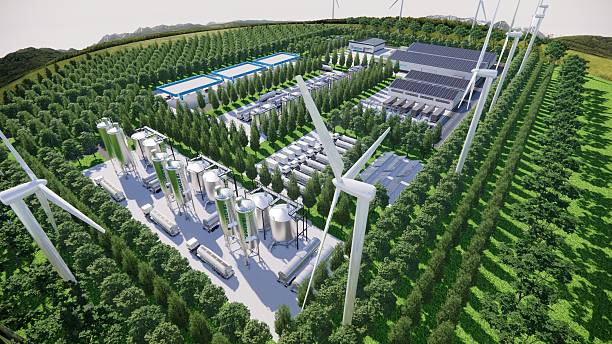AI, IoT, and Blockchain in Renewables

Q1. Could you start by giving us a brief overview of your professional background, particularly focusing on your expertise in the industry?
I bring over 25 years of cross-functional experience in Renewable Energy, carbon and sustainability consulting, and finance operations, backed by a solid foundation in Strategy and Operations leadership.
Currently serving as Head of Strategy and Operations at Climatex, I lead cross-sectoral initiatives in decarbonization, carbon markets, and corporate ESG.
My academic background includes an MBA, as well as various certifications in GHG Accounting, ESG and Sustainability Reporting, Microsoft Technologies, and CDM/JI. I bring a systems-thinking approach to integrating sustainability with digital innovation, particularly in emerging areas like AI, blockchain, and climate fintech.
Q2. What are the primary factors driving the expansion of energy storage markets, particularly in relation to renewable energy sources like wind and solar?
The expansion of energy storage is driven by several key factors, as listed below:
Intermittency of Renewables: Solar and wind are variable; storage ensures stability and grid reliability.
Declining Battery Costs: Lithium-ion and alternative chemistries (e.g., sodium-ion, flow batteries) are becoming more cost-competitive.
Grid Decentralization and Flexibility: Need for distributed energy storage to support smart grids and demand-response models.
Policy Incentives: Government subsidies, net-metering schemes, and mandates for storage integration (e.g., US Inflation Reduction Act, India’s NAPCC).
Corporate ESG and Decarbonization Goals: Energy storage helps corporates meet 24/7 clean energy and carbon neutrality targets.
Electrification of Transport: EVs act as both consumers and mobile storage, driving battery innovation and scale.
Q3. What is the projected market growth for AI and IoT solutions in the renewable energy sector over the next 5–10 years?
AI and IoT in the renewable energy sector are expected to see a CAGR of 15–20% globally, with the market projected to exceed USD 75–80 billion by 2030.
Key growth drivers include:
- AI-powered forecasting for solar/wind output
- Predictive maintenance of assets using IoT sensors
- Grid optimization & load balancing
- Energy trading & blockchain integration
- Smart meters and DER (Distributed Energy Resources) management
India, the EU, and the US are leading adoption, with increasing VC interest in climate-tech startups focused on digital energy solutions.
Q4. What is the current market size for biochar, and what are the growth projections for the next 5 years? What innovative startups are emerging in the biochar space?
Current Market Size (2024): Estimated at USD 2.0–2.5 billion
Projected CAGR: 12–14%, reaching USD 4–5 billion by 2030
Growth is fuelled by:
- Soil enrichment and agricultural carbon sequestration
- Biochar's eligibility for carbon credits under Verra and Gold Standard
- Applications in construction, wastewater treatment, and regenerative agriculture
Innovative startups
Carbo Culture (Finland) – High-efficiency pyrolysis for carbon removal
Charm Industrial (US) – Converts biomass to bio-oil for underground storage
CarbonCycle (Australia) – Agricultural biochar with measurable climate benefits
Takachar (India/US) – Affordable, decentralized biochar tech for farmers
Q5. What is the environmental impact of integrating blockchain into energy systems, especially considering the energy consumption associated with blockchain operations?
Environmental impact depends on the blockchain type:
- Proof-of-Work (PoW) (e.g., Bitcoin) has high energy consumption and is not environmentally sustainable
- Proof-of-Stake (PoS) or private/permissioned blockchains used in energy trading (e.g., Power Ledger, Energy Web) are significantly more energy-efficient
Positive Impacts
- Enables peer-to-peer energy trading
- Supports real-time REC and carbon credit tracking
- Enhances grid transparency and traceability
Risks
- Energy use can be high if not built on sustainable infrastructure
- Carbon footprint may offset gains if blockchain is powered by fossil-intensive data centers
Hence, blockchain must be paired with clean energy and used in lightweight consensus models to be sustainable.
Q6. How are market dynamics, such as price fluctuations and availability, impacting corporate strategies regarding renewable energy credits (RECs) and carbon offsets?
Corporates are adapting in several ways:
- Volatility in REC & offset pricing (especially post-COP28 scrutiny) has led to a shift from short-term buying to long-term PPAs and direct project investments
- Quality and co-benefits now matter more than volume — companies are prioritizing high-integrity offsets (e.g., nature-based, CDR) over cheap legacy credits.
Many are in-housing carbon procurement or partnering with climate fintech platforms to gain price transparency.
There is also growing skepticism and audit pressure, leading to more stringent MRV (Monitoring, Reporting & Verification) and the adoption of science-based targets.
Strategically, leading firms are embedding carbon cost forecasting into supply chains and treating decarbonization as a hedge against future compliance costs.
Q7. If you were an investor looking at companies within the space, what critical question would you pose to their senior management?
How resilient and verifiable is your climate impact model, and how does it align with upcoming regulatory and investor scrutiny on greenwashing and carbon transparency?
This question probes:
- Their MRV systems
- Credibility of carbon claims
- Alignment with frameworks like TCFD, ISSB, and SBTi
- Strategic foresight in anticipating compliance regimes and voluntary market reforms
Secondary questions might include:
- How are you leveraging digital solutions (AI, IoT, blockchain) to optimize both climate and commercial performance?
- What percentage of your revenue is future-proof under a net-zero scenario?
Comments
No comments yet. Be the first to comment!
